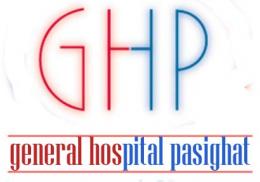
History
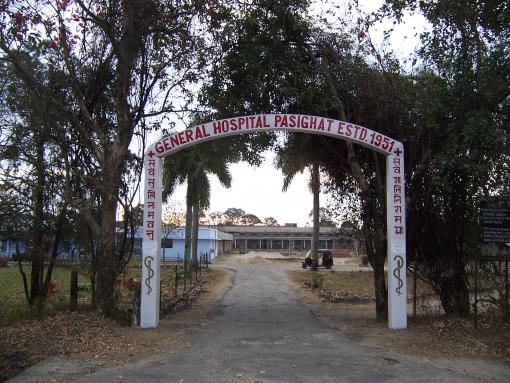
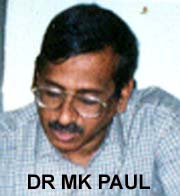
A HISTORICAL REVIEW OF
GENERAL HOSPITAL PASIGHAT
By Late DR MK PAUL, Ex-Pediatrician, General Hospital Pasighat
The history of modern medical care in the Pasighat sub-Division of Arunachal Pradesh dates back in early part of the 19th Century. Father N.M. Krick, a French missionary is said to have first used modern medicines in Mebo area during his visit to that area in 1853.
In the year 1911, the British Government established administrative centre at Pasighat. With the establishment of administrative centre, the need for health care system was felt and accordingly a small health unit was established here in 1912. The medical unit at that time was catering mostly the need of Army, British employee and some public of Pasighat. Public used to have some difficulties and hesitation to attend the health unit (which was mainly for Army). So, to meet up the need of public a civil hospital was established in 1914. In 1915, the hospital was enlarged with indoor facilities.
With passage of time, the hospital has been many stages of evolution and ultimately grown its present shape. The early history of the hospital, which is the premier institute of this state, is not clear due to lack of material evidence. Fortunately, we have some eyewitness, surviving with us who had seen the hospital in its early years though not from its inception. Here in we shall try to summarize their statement and experience and share it with our readers.
The hospital from the time of its inception was situated in the old Pasighat town on the bank of river Siang. Being endangered by the erosion caused by the river Siang after the earthquake of 1950,the hospital was shifted to the present site .The old site of the hospital is existing till today with all its past memory and glorious history.
The main hospital building in those days was "CHANG-ghar" type. It had wooden floor raised on wooden pillars, thatch roof (thatch roof cover CGI sheet), “ IKHARA” wall with mud plaster and whites wash. The building had two wings –one for female and other for male patients. Other than main building, the hospital complex had O.P.D., medicines store room, post mortem room, one special ward, V.D. block, malaria store, one operation theatre, TB ward and kitchen.
There were quarters for doctors and staff. Residential quarters of cleaners, Mali, water –man, cook and malaria store, TB ward etc. are still existing in the old site in a very fall apart state remembering us the old memory. The main hospital complex is not being seen now. The river Siang had eroded the residential quarters of doctors and the mighty river is now flowing through the sites of these quarters.
There was no separate labour (delivery) room in the hospital .The delivery was to be conducted in the beds only. Midwife used to visit the residence of pregnant women for conducting delivery.
The hospital was clean, airy and there were flower gardens too. There was service latrine for the patients and water supply was from an outside tap, which used to receive water from Panekaran stream. In those days, electricity was a dream. There was Kerosene oil lamp in the hospital throughout the night.
The hospital had both indoor services like those that the present time. O.P.D. was used to be open from 8 a.m. to 11 a.m. and again from 3 p.m. to 5 p.m. Sunday was holiday and Saturday was half working day. Doctors and midwives used to visit patients at their residence also. Practically the doctor and staff used to work all throughout the day.In indoors, there were separate wards for male, female venereal diseases and TB patients.
There was operation theatre and dressing room in the hospital. However, there was on major surgery until late forties. Plastering of fractures, stitching of injuries etc. were used to be done by the doctors. First major operation is said to be done on Smti Okok Moyong, wife of Shri Bhandari Moyong in the year 1952-53.The operation was for hernia and the surgeon was Dr. Verma. The operation was done under general anaesthesia, which was inducted by Dr. Verma himself. Smti Prasati Regan was the nurse inside the OT
In those days, antibiotics and injectable medicines were unknown. Very few medicines like quinine, sulpha drugs and different mixtures were supplied from the hospital. Diseases like Malaria, TB, diarrhoea, and venereal diseases like syphilis, gonorrhoea etc. were predominant at that time.
Many a doctors did pioneering works and gave their dedicated services in this hospital. Dr. Ahmed L.M.P. (1942), Dr.Mahenra Sarma (1944-48), Dr. Kalyan Choudhory, Dr. C.R. Gupta, Dr. N.C. Palchoudhoury (1965-71), Dr. S.C. Bhattcharjee, Dr. D.P. Bhattcharjee were few among them. Dr Verma was the Chief Medical Officer in 1952-53. Dr. Ayenger was attached with Medical work there. In the late fifties (1957-58), Dr. C.V. Raman became the first Assistant Director of Health services for the general hospital and health training and research centre. (Discussed later). There was a Mizo Lady doctor in the hospital in the early fifties and after her departure Dr. Miss S. Neog (Sarma) came. She later got married to Dr. Ayenger.
Mrs. Latika Kalita joined as midwife in the year 1944. Smti Parasti Regan was nurse in the early fifties. There were two pharmacist- one for indoor and another for outdoor. One of the pharmacists was Mr. Ao, who hailed from Naga Hills. There were two nursing assistants, one female named Abul Dai and another male named Talo Sobo Ering. Smti Abul Dai later got married to pharmacist Ao Babu. Mr. Tama Nonang joined as ward boy /nursing assistant in the year 1954. There were two cleaners – one male named Gund and another female named Koblshia. Both were very much old in the early fifties. In the year 1957 –58 sister-incharge of the hospital was Mrs. Nonglai. She was Khasi woman. Mrs. Evelyn Premadhasa joined as Matron in the year 1961. She was the first Matron of the hospital
After the earthquake of 1950, the river Siang started eroding the old Pasighat bazaar near which the hospital was situated. Being endangered by erosion, the need for a new hospital site was felt and accordingly the construction for the new hospital and training complex of the present site was started. The foundation stone of the new hospital was laid in the year 1954 and Shri Fazal Ali, the Governor of Assam, inaugurated it in the year 1958. As told earlier, Dr. C.V. Raman became the first A.D.H.S. of the hospital. In his time only shifting of hospital to present site was done and ANM training was started. Though the hospital was inaugurated in the year 1958, patients were actually shifted in the present site during the later part of 1960. Before shifting the patients to the present site, they were kept temporarily in a barrack near present Kali Bari of high region. One separate building (which is now Shri Atem Tayeng’s quarter) served as OT and labour room. This temporary arrangement continued for 1-2 years. First batch of ANM got most of their practical training in that temporary hospital and labour room.
In 1956, the health training and Research centre was founded at Pasighat civil hospital. This became the only institution of the kind in Arunachal Pradesh (then NEFFA). “ In order to keep pace with the increasing activities for extension of public health service and also to promote health education, it was envisaged that the local people should be given such training so as to enable them to work for implementation for the public health programmes in their own area”.
After the establishment of health training and research centre at the hospital, different types of training course started in the institute one after another. The orientation course for public health doctors started in 1956. The course for the first batch of doctors continued from 30-7-56 to 15-9-56. The first batch of doctors included (1) Dr. A.C. Chakraborty (2) Dr. N.C. Goswami (3) Dr. D.L. Roy (4) Dr. Borbora. Total 4 batches of doctors were oriented. The last batch got their training from 1-8-57 to 28-9-57.
To keep pace with the expanding need of medical service in interior area of NEFFA, training for Auxiliary Nurse Midwife started in the year 1958 in this institute. The first batch of ANM joined the course in November 1958 and they completed the course successfully by October 1960. There were six girls in the first batch. They were (1) Smti R. Sankric (2) Smti Mema Bengia (3) Smti Yakar Bengia (4) Smti Oyi Tangu (5) Smti Omik Ering and (6) Smti Osor Gao. The ANM students received most of their training in the temporary hospital (near Kalibari) as mentioned earlier. There was no nurses’ hostel at the time. The hostel was under construction. They used to stay in some quarters. Afterwards, they shifted to the present nurses’ hostel in the later part of 1960 after its completion. At about the same time, when the patients were finally shifted to the new hospital complex they received their practical training in the new hospital for the remaining period for the course Mrs. Nonglai, sister incharge, Dr. C.V Raman, ADHS, Dr. S.C. Chakraborty, Dr. C.R Gupta and one lady doctor used to impart them the training. At present 32nd batch (1999) is undergoing ANM training.
Training for Heath Assistant (Junior) started from the year 1959. The 1st Batch got their training from 25/1/1959 to 28/6/1959. The batch included both in-service (9 Nos) and stipendiary (1 No) trainees. The present batch is the 25th batch of the Health Asstt (Jr.)
The training for Health Assistant (Senior) also started in 1959. The 1st batch was imparted training from July/1959 to September/1959. They were all in-service candidates. The training of HA (Sr.) was discontinued after 1961.
In the year 1966, the Pharmacist training course was started. The 1st batch of the students got their training from May/1966 to April/1969 and the last batch from 1/4/1977 to 31/3/1980. After that, the training course was discontinued because the course did not get requisite recognition from the Pharmacist Council. In the beginning, Dr S C Bhattacharjee, after retirement was the in-charge of the Pharmacist Training course.
There was training for Dais also. Total 15 Nos of batches were trained. The training was discontinued for from 28/2/1966 to 31/12/1982.
To meet the immediate demand for health care in rural and hilly areas, the local youths were trained as Medics in total 10 nos of batches from September/1964 to June/1983.
There was orientation training in medical disciplines for the school- teachers (3/2/1966 to 28/2/1966), Domicilliary Health Visitors and Inspectors (4/2/1966 to 28/2/1966).
In 1965, Dr N C Paulchoudhury took over as an Assistant Director of Health Services. It is said that he was the person who was instrumental in getting financial power for ADHS. Cashbooks in the office are being maintained from that time only.
District Tuberculosis Centre was established in 1967.The TB ward was shifted from the original site to the present one in 1968. Dr D P Bhattacharjee was the first District Tuberculosis Officer.
Throughout the years, the Institute was developed in different phases and has assumed the present shape. In 1973, there was first extension of indoor wards. Sri K A A Raja inaugurated the building, the then Lieutenant Governor of Arunachal Pradesh on 16/1/1973. Smti Padmawati Raja inaugurated the Out Patient Block (General) in 1/3/1976. In the same year, Sri P K Thungon inaugurated Specialist OPD Block, the then Chief Minister of Arunachal Pradesh on 19/5/1976.
In 1984, there was a big fire accident in the hospital. It caused devastating damage to the hospital building and almost 50% of the hospital complex was damaged. Following that fire accident a new three-block ward was constructed and was inaugurated by Shri Gegong Apang, the then Chief Minister of Arunachal Prudish on 19th April 1990.
Presently, a big modern operation theatre, Special Cabin, Intensive Care Unit, 50-bedded Maternity and Child hospital etc are under construction. The OT is near completion. The present bed strength of the hospital is 120 including 30-bedded TB ward. The hospital has now almost all the specialty services including Surgery, Medicines, Obstetrics and Gynecology, Paediatrics, ENT, Eye, Dentistry. It has also good laboratory, operation theatre for surgery and eye, X-ray unit, ultrasound unit. AIDS Surveillance Center. Shri Mukut Mithi, Chief Minister of Arunachal Pradesh, inaugurated the registered Blood Bank in General Hospital Pasighat on 23rd May 1999.
This is oldest hospital in Arunachal Pradesh and is catering the need of people not only of Arunachal Pradesh but also adjoining area of Assam.
There is some expansion programme in hand to develop the hospital in to a more equipped one. The hospital and the training institute are expected to develop into an advance center for medical care in near future.
(As published in ARUNACHAL FRONT, VOL-VIII No 13 (dated 26/1/2000) and No 14 dated 3/2/2000
ABOUT THE AUTHOR :
DR MIHIR KANTI PAUL (b. 07/02/1955 d.17/03/2004)
He died slowly, silently, unsung, unheard in a remote south eastern town in Assam, Karimganj. A suave and simple man, Dr Mihir Kanti Paul had a brilliant academic career. He topped the 4th position in Higher Secondary examination in 1970. Graduated from Silchar Medical College, he did his master degree in Pediatrics from Assam Medical College. Dr Paul then joined in Arunachal Pradesh State Health Service as a Specialist in Pediatrics in Ziro on 16th November 1982. For long 10 years, he served the people of Ziro. Still he is remembered by the people of Ziro for his sincere and hard work. Feeling the greater need of his service, Dr Paul was transferred to Pasighat. Here also his name and fame spread beyond the border of Ruksin. Not to speak of the people of East Siang, West Siang and Upper Siang, people from Dhemaji district of Assam too benefited from his service. Dr Paul, infact was the 1st specialist in Child Health in Arunachal Pradesh.
Besides being a successful professional and academics, Dr Paul was also interested in research work. He wrote the 1st research article on the General Hospital Pasighat. Pasighat General Hospital, the oldest hospital of the state, is having no record about its start, the men behind the organization, the fate of the institution during pre-Independence era and its subsequent development to the present status. He did a lot of hard work to get the documents, whatever little it may be, from different sources, interviewed a lot of persons, including prominent Leaders, beaurocrats, retired government servants and village elders. ‘Arunachal Front’ duly recognized his hard work and published it.
A deeply religious man, Dr Paul was a total vegetarian. He propagated the usefulness of vegetarian diet, preached the ideals of universal brotherhood and no-violence.
What a cruelty, the irony of nature, that such a man of high intellect was attacked by a glioblastoma multiforme, a highly malignant tumour of the brain. Since it was operated on 2nd June 2003, he practically did not regain his consciousness till his death on 17th March 2004.


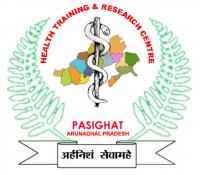
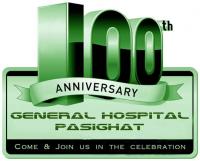

 This is a free homepage created with page4. Get your own on www.page4.com
This is a free homepage created with page4. Get your own on www.page4.com